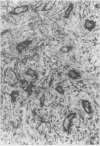Abstract
Renal tubules and interstitium have close physiological associations. Changes in both are often seen in renal disease. Damaged tubules can attract inflammatory cells and stimulate interstitial fibrosis, but do not always do so. Interstitial inflammation can damage tubules and can also stimulate fibrosis, and is probably always initiated by tubular events. Interstitial and tubular abnormalities are closely associated with changes in renal excretory function, but tubular events are more important. A main determinant of the outcome of renal disease is whether tubules can recover, not the extent of interstitial changes. If tubules are atrophic, they will not recover and renal function will be permanently impaired.
Full text
PDF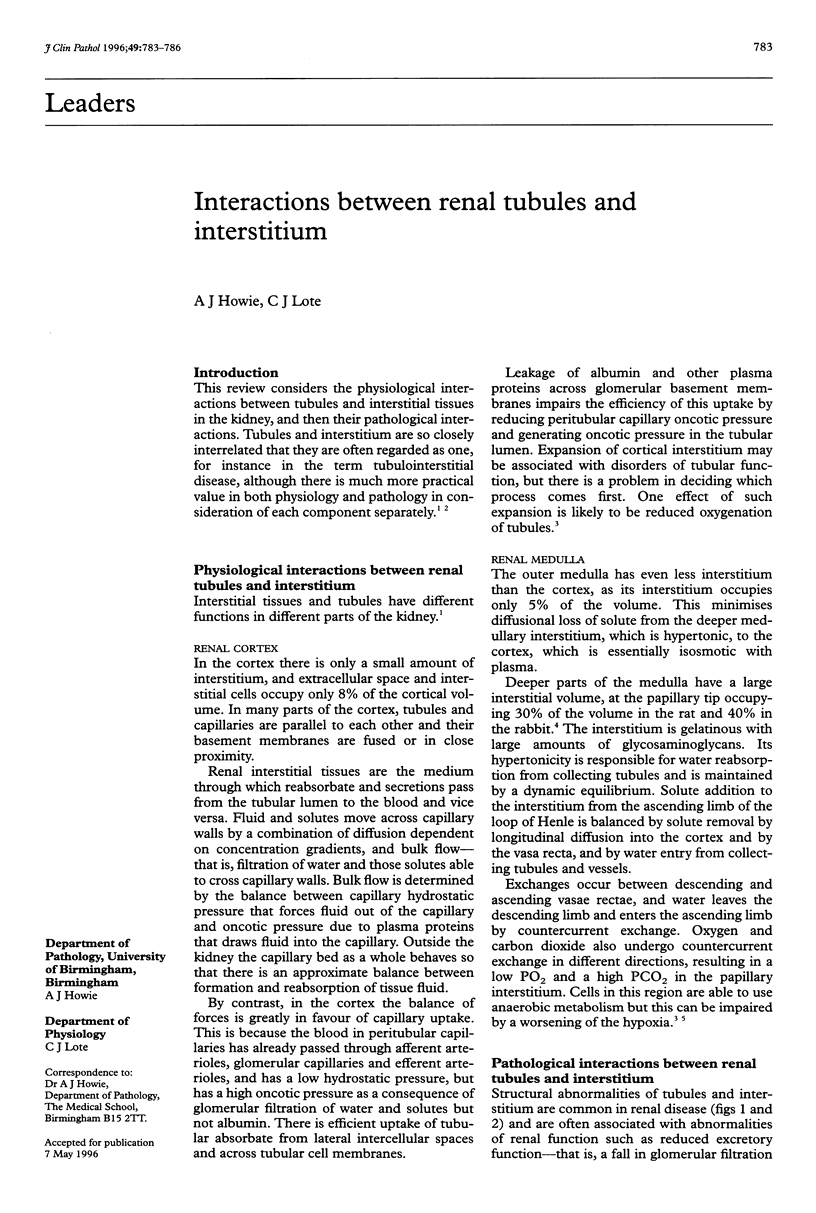
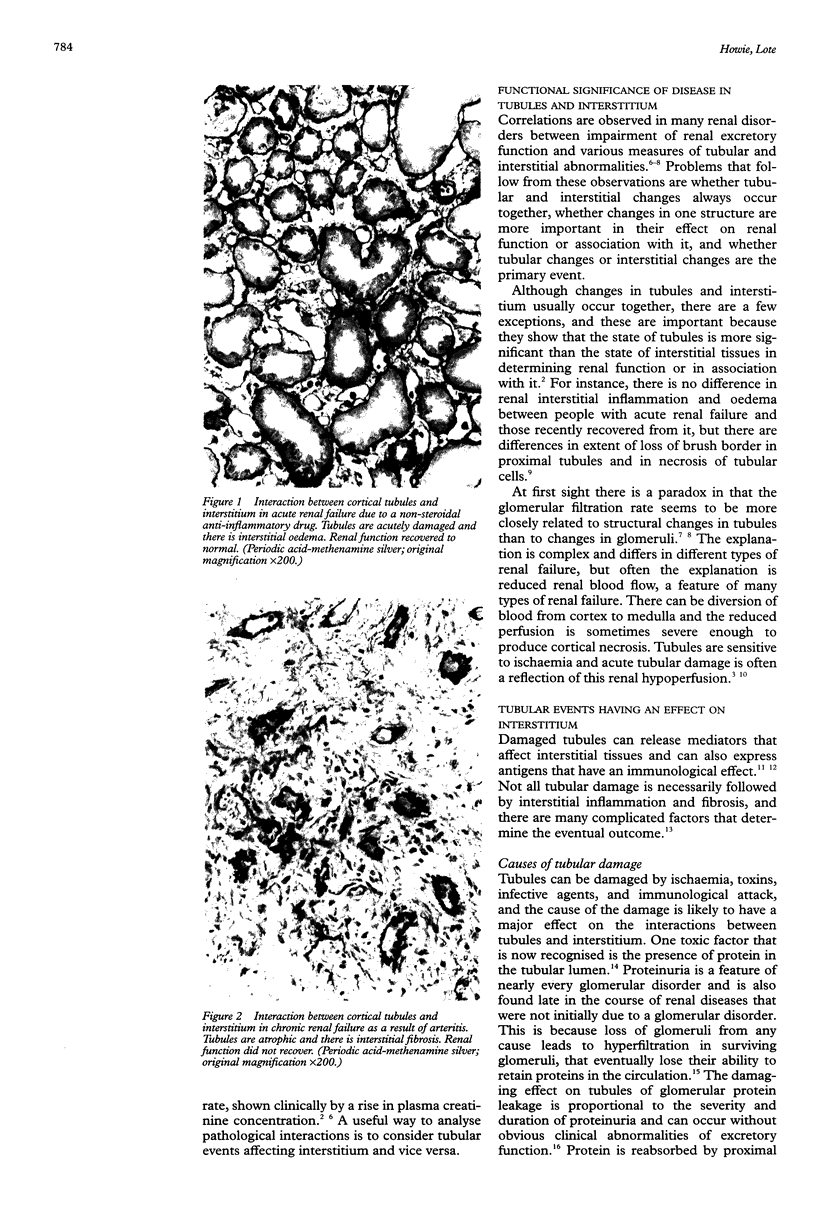
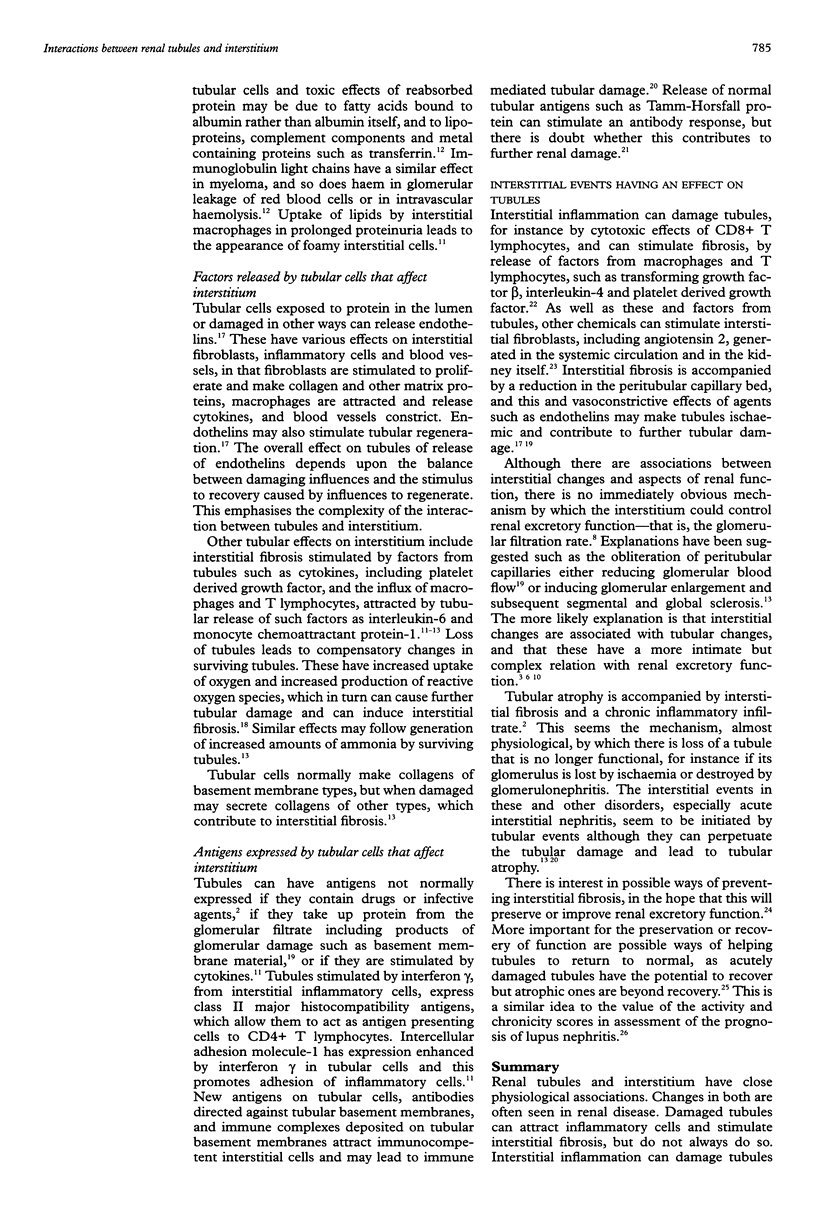
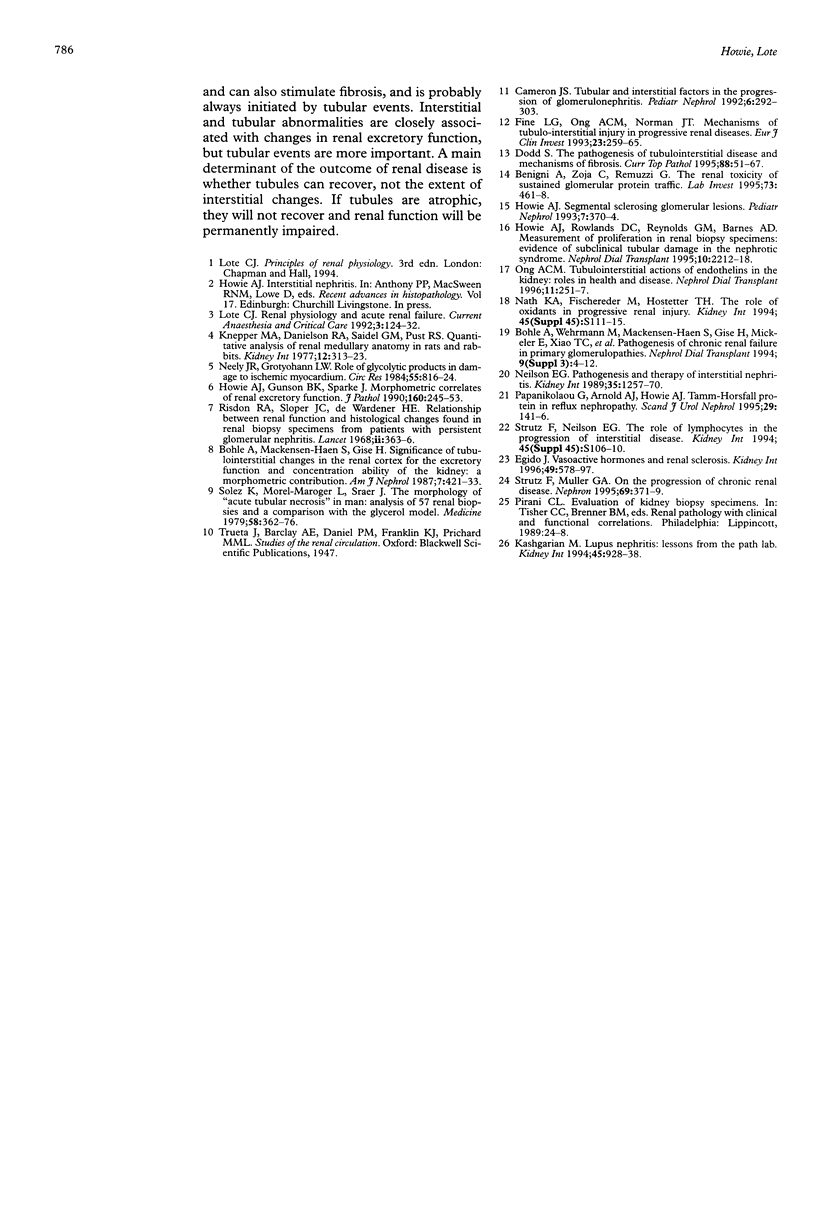
Images in this article
Selected References
These references are in PubMed. This may not be the complete list of references from this article.
- Benigni A., Zoja C., Remuzzi G. The renal toxicity of sustained glomerular protein traffic. Lab Invest. 1995 Oct;73(4):461–468. [PubMed] [Google Scholar]
- Bohle A., Mackensen-Haen S., von Gise H. Significance of tubulointerstitial changes in the renal cortex for the excretory function and concentration ability of the kidney: a morphometric contribution. Am J Nephrol. 1987;7(6):421–433. doi: 10.1159/000167514. [DOI] [PubMed] [Google Scholar]
- Bohle A., Wehrmann M., Mackensen-Haen S., Gise H., Mickeler E., Xiao T. C., Müller C., Müller G. A. Pathogenesis of chronic renal failure in primary glomerulopathies. Nephrol Dial Transplant. 1994;9 (Suppl 3):4–12. [PubMed] [Google Scholar]
- Cameron J. S. Tubular and interstitial factors in the progression of glomerulonephritis. Pediatr Nephrol. 1992 May;6(3):292–303. doi: 10.1007/BF00878382. [DOI] [PubMed] [Google Scholar]
- Dodd S. The pathogenesis of tubulointerstitial disease and mechanisms of fibrosis. Curr Top Pathol. 1995;88:51–67. doi: 10.1007/978-3-642-79517-6_2. [DOI] [PubMed] [Google Scholar]
- Egido J. Vasoactive hormones and renal sclerosis. Kidney Int. 1996 Feb;49(2):578–597. doi: 10.1038/ki.1996.82. [DOI] [PubMed] [Google Scholar]
- Fine L. G., Ong A. C., Norman J. T. Mechanisms of tubulo-interstitial injury in progressive renal diseases. Eur J Clin Invest. 1993 May;23(5):259–265. doi: 10.1111/j.1365-2362.1993.tb00771.x. [DOI] [PubMed] [Google Scholar]
- Howie A. J., Gunson B. K., Sparke J. Morphometric correlates of renal excretory function. J Pathol. 1990 Mar;160(3):245–253. doi: 10.1002/path.1711600311. [DOI] [PubMed] [Google Scholar]
- Howie A. J., Rowlands D. C., Reynolds G. M., Barnes A. D. Measurement of proliferation in renal biopsy specimens: evidence of subclinical tubular damage in the nephrotic syndrome. Nephrol Dial Transplant. 1995 Dec;10(12):2212–2218. doi: 10.1093/ndt/10.12.2212. [DOI] [PubMed] [Google Scholar]
- Howie A. J. Segmental sclerosing glomerular lesions. Pediatr Nephrol. 1993 Aug;7(4):370–374. doi: 10.1007/BF00857541. [DOI] [PubMed] [Google Scholar]
- Kashgarian M. Lupus nephritis: lessons from the path lab. Kidney Int. 1994 Mar;45(3):928–938. doi: 10.1038/ki.1994.123. [DOI] [PubMed] [Google Scholar]
- Knepper M. A., Danielson R. A., Saidel G. M., Post R. S. Quantitative analysis of renal medullary anatomy in rats and rabbits. Kidney Int. 1977 Nov;12(5):313–323. doi: 10.1038/ki.1977.118. [DOI] [PubMed] [Google Scholar]
- Neely J. R., Grotyohann L. W. Role of glycolytic products in damage to ischemic myocardium. Dissociation of adenosine triphosphate levels and recovery of function of reperfused ischemic hearts. Circ Res. 1984 Dec;55(6):816–824. doi: 10.1161/01.res.55.6.816. [DOI] [PubMed] [Google Scholar]
- Neilson E. G. Pathogenesis and therapy of interstitial nephritis. Kidney Int. 1989 May;35(5):1257–1270. doi: 10.1038/ki.1989.118. [DOI] [PubMed] [Google Scholar]
- Ong A. C. Perspectives in endothelin research: tubulointerstitial actions of endothelins in the kidney: roles in health and disease. Nephrol Dial Transplant. 1996 Feb;11(2):251–257. doi: 10.1093/oxfordjournals.ndt.a027249. [DOI] [PubMed] [Google Scholar]
- Papanikolaou G., Arnold A. J., Howie A. J. Tamm-Horsfall protein in reflux nephropathy. Scand J Urol Nephrol. 1995 Jun;29(2):141–146. doi: 10.3109/00365599509180554. [DOI] [PubMed] [Google Scholar]
- Risdon R. A., Sloper J. C., De Wardener H. E. Relationship between renal function and histological changes found in renal-biopsy specimens from patients with persistent glomerular nephritis. Lancet. 1968 Aug 17;2(7564):363–366. doi: 10.1016/s0140-6736(68)90589-8. [DOI] [PubMed] [Google Scholar]
- Solez K., Morel-Maroger L., Sraer J. D. The morphology of "acute tubular necrosis" in man: analysis of 57 renal biopsies and a comparison with the glycerol model. Medicine (Baltimore) 1979 Sep;58(5):362–376. [PubMed] [Google Scholar]
- Strutz F., Müller G. A. On the progression of chronic renal disease. Nephron. 1995;69(4):371–379. doi: 10.1159/000188505. [DOI] [PubMed] [Google Scholar]
- Strutz F., Neilson E. G. The role of lymphocytes in the progression of interstitial disease. Kidney Int Suppl. 1994 Feb;45:S106–S110. [PubMed] [Google Scholar]




